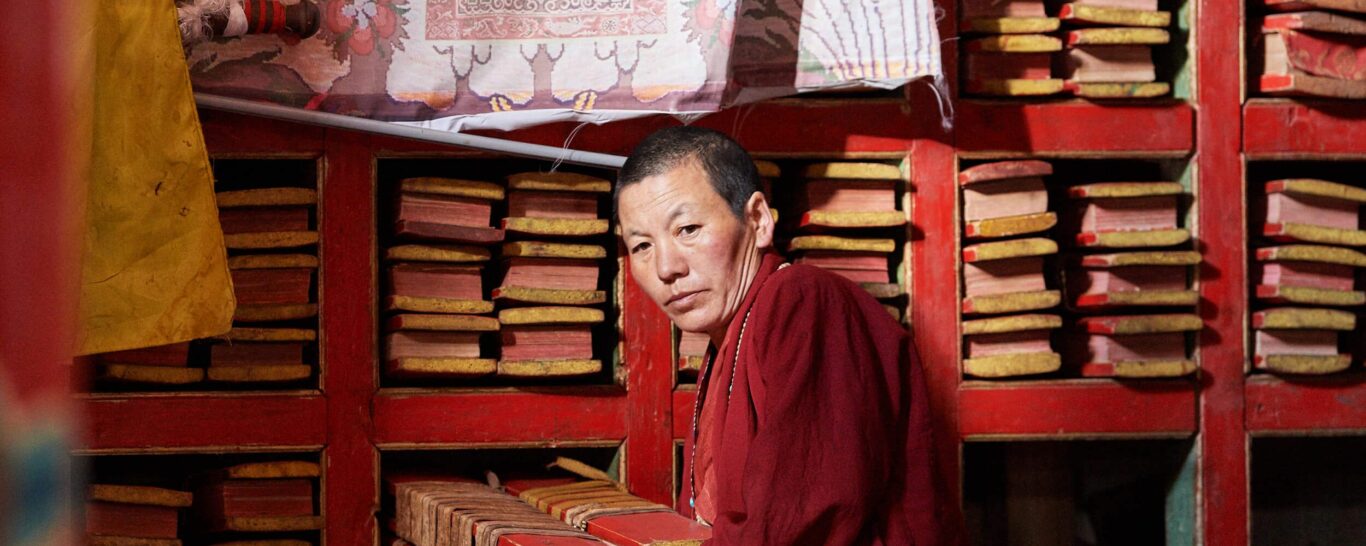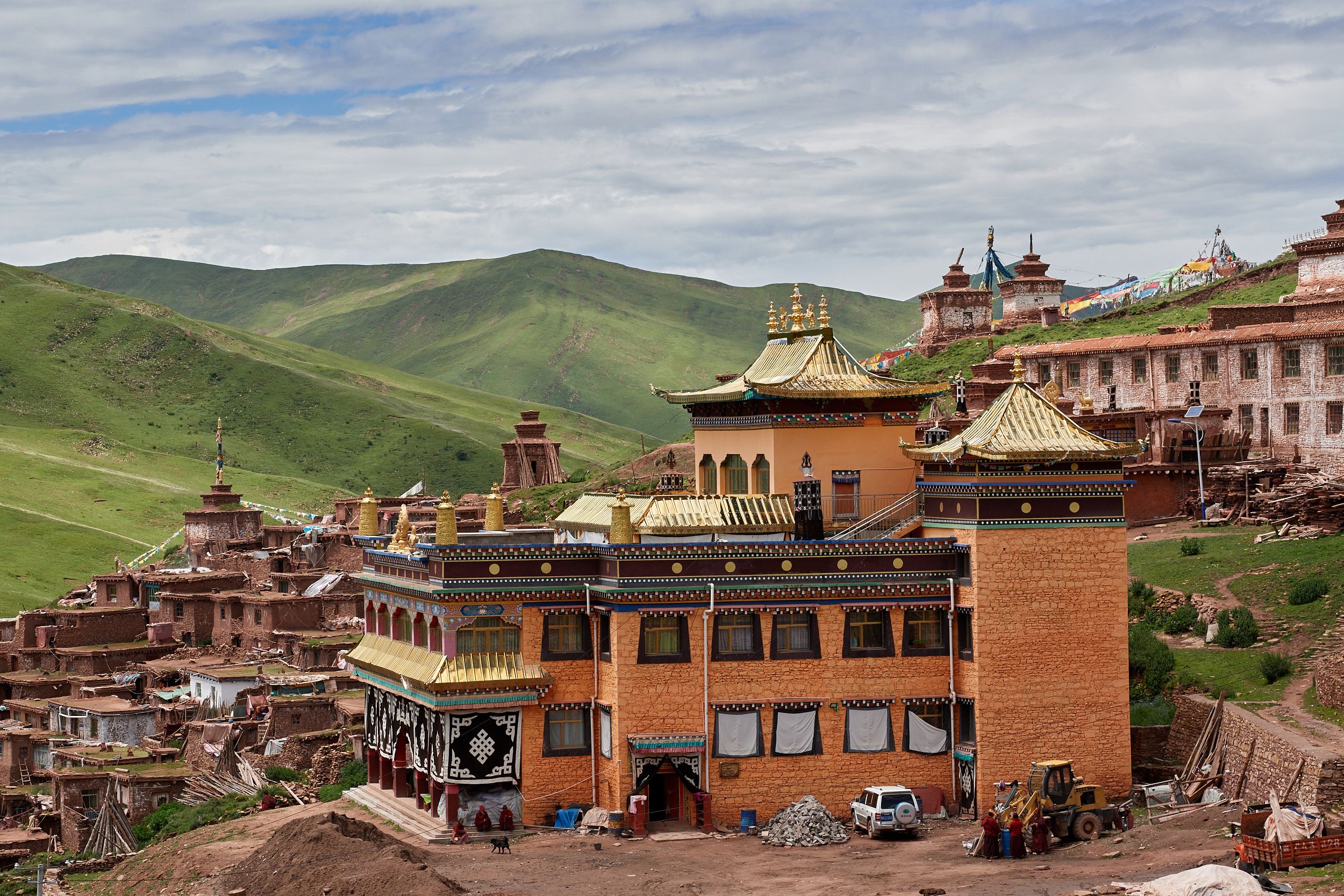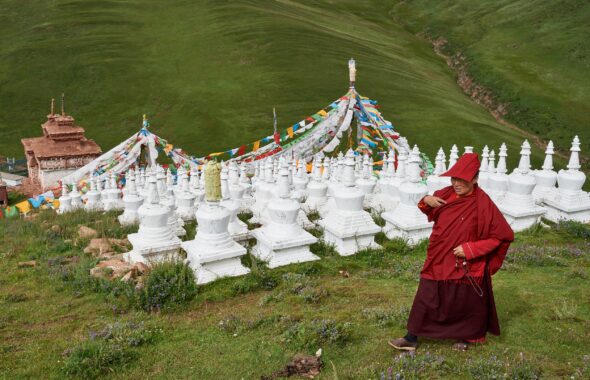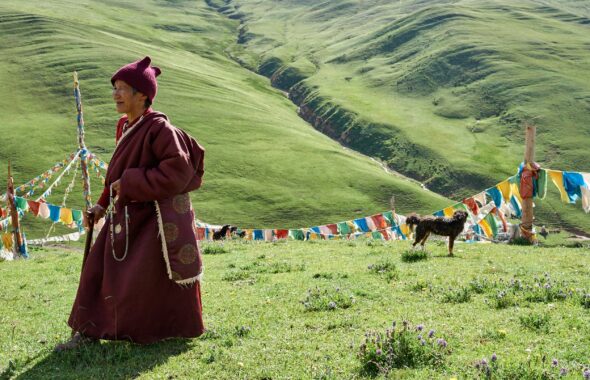Tsoknyi Nangchen Nuns

Tsoknyi Nangchen Nuns: A History of Resilience and Devotion
Until 1949, Nangchen was an independent Eastern Tibetan kingdom, known for its unique language and government structure, and it is where the majority of Tsoknyi nunneries are situated. Today, Nangchen is incorporated into the Qinghai province of China. Due to its remoteness, Nangchen remained largely unaffected by Chinese or Tibetan influence before 1949, and even today, it is seldom visited. The entire region is located above 10,000 feet (3,000 meters), and primarily consists of grasslands divided by the steep gorges of rivers that merge to form the Mekong. The population has traditionally been made up of nomadic or semi-nomadic herders, known for their exceptional horsemanship and fierce combat skills. In 1994, French explorer Dr. Michel Peissel described Nangchen as ‘the remotest, largest, and most secretive of the many little kingdoms of the much-feared Khampa tribes’ and ‘no doubt the last of the truly unexplored old Tibetan kingdoms.’

The Tsoknyi nunneries were established in the 19th century by Tsang Yang Gyamtso, who was instructed by his teacher, Tsoknyi Rinpoche I, to build nunneries. This initiative aimed to provide female practitioners with equal opportunities as their male counterparts to learn and practise the most advanced teachings of Tibetan Buddhism.
Nangchen is renowned for its dedicated meditators – both yogis and yoginis – who practise diligently and who attain great realisation. The region is often referred to as gomde, which means land of great meditators. Among this community, the Nangchen yogini nuns are particularly celebrated for their accomplishments in profound yogas and meditation practices, such as tsa lung (including tummo or inner heat), Dzogchen (the highest form of meditation), and chöd (which involves cutting through all attachment to the ego). These practices are deeply rooted in the Kagyu and Nyingma schools of Tibetan Buddhism. The tradition of the Tsoknyi nuns flourished for a century, expanding to include 4,000 women residing in 40 nunneries scattered throughout the Nangchen mountains.

The Cultural Revolution that took place during the 1960s led to substantial change, resulting in the destruction of all 40 nunneries and the consequent dispersion of the nuns. Many were sent to Chinese work camps, returned home to their nomadic families, or lost their lives. However, a few managed to secretly practice in caves, keeping the tradition alive in their minds despite losing most of the texts. After 20 years, these nuns started to regroup and rebuild their nunneries, stone by stone. As time passed, others joined them. By the time Tsoknyi Rinpoche III visited in 2003, he realised that the older nuns had preserved the sacred tradition and were passing it on to a new generation, despite facing extreme hardships and difficult living conditions. Tsoknyi Rinpoche III took on the responsibility of helping them survive.

Today, around 3,000 nuns receive his support across roughly 35 nunneries. Most of these nuns are under 45 years old and have joined the nunneries after they were rebuilt following the Cultural Revolution. Most of the nuns come from the local nomad population and traditionally relied on their families for support. The nunneries’ yearly schedule includes summer breaks for the nuns to help their families with harvesting crops and herding yaks, after which they return to the nunneries with a share of the crop in the form of tsampa, the roasted barley flour that constitutes part of their staple diet. Butter and tea are the other main staples.

In recent times, the traditional, family-based support system that the Nangchen nuns have relied on is being undermined by forced urbanisation and the resettlement of nomadic families into permanent housing. The story of the nuns is one of unwavering dedication and perseverance. They typically engage in spiritual practices as a group, teaching and supporting each other throughout their lives. Many nuns undertake three-year, nine-year, or even lifelong retreats. As originally established by Tsoknyi Rinpoche I and Tsang Yang Gyamtso over 100 years ago, most nunneries require nuns to complete a three-year retreat, after which they enter one of the 16 practice houses. By alternating between daily upkeep and retreat periods, the Nangchen nuns maintain a lifelong commitment to their practice. During retreats, the nuns follow a time-honoured daily routine that has been observed by yogis and yoginis for centuries. This includes four three-hour meditation sessions each day. At night, most nuns remain seated in a meditation box, combining meditation and sleep.
